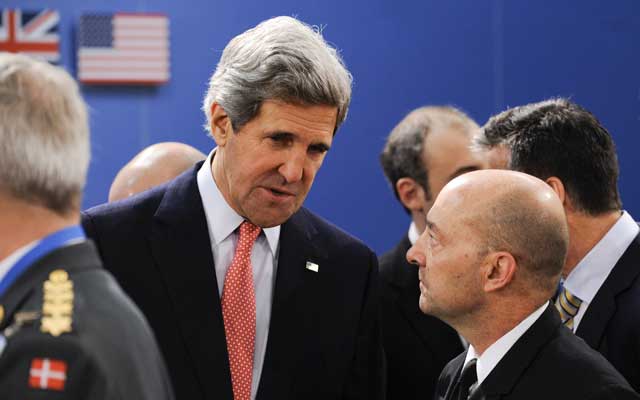Retired U.S. Navy Admiral James Stavridis recently highlighted some of the security threats the U.S. is facing in the Arctic and addressed a few ways to increase capacity there in a recent Foreign Policy article.
As former supreme allied commander of NATO and commander of United States European Forces Command, Stavridis knows well how increasingly important this region will become to U.S. and allied interests. “The risks are fairly well known,” he says. These include a heightened likelihood of incidents as traffic increases in the Arctic Circle—a result of newly available sea lanes, minerals and hydrocarbons, and fisheries and other natural resources. Stavridis anticipates direct conflict in the region in the future, but for now, the vast geography, harsh conditions, and limited security assets in the Arctic demonstrate that the U.S. has much to do to provide adequate security there.
One way the U.S. can be better prepared is by improving the Coast Guard’s polar icebreaker fleet. Current strategy requires six such vessels, but the U.S. only has two, one of which is barely operational and over 40 years old. Comparatively, Stavridis points out, Russia currently sails a dozen icebreakers, and even China has built its own.
Yet this recommendation is easier said than done. While the Coast Guard has budgeted a few million dollars for research and development of a new polar icebreaker, the ship is expected to take a decade to build and cost nearly a billion dollars. Furthermore, the Coast Guard’s total procurement budget has declined recently, making it unrealistic that it will be able to take on such a time- and cost-intensive program.
Instead, the U.S. should consider contracting private commercial icebreakers to serve in this capacity. This in turn requires loosening restrictions imposed by the Jones Act, which mandates that commercial vessels operating between two U.S. ports be American-built, -flagged, and -manned. Eliminating this requirement would save the Coast Guard money while providing an immediate solution to the shortfall in icebreaker capability.
A robust Arctic strategy takes more than just breaking ice, however. Stavridis argues that the U.S. “should invest a reasonable amount in the sensors and technology to map and track the Arctic—satellites, reconnaissance flights, and undersea monitoring.” This is where the Coast Guard can receive support from the Navy and other Department of Defense organizations that have the resources to field expensive communications and surveillance capabilities. Coast Guard core missions such as search and rescue, marine environmental protection, and aids to navigation would be greatly enhanced by better situational awareness.
The Coast Guard recognizes the increased significance in the Arctic and is putting an increasing emphasis on its responsibilities there, as evidenced by the 2013 report “U.S. Coast Guard’s Visions for Operating in the Arctic Region.” However, as the Coast Guard and other U.S. security forces face continued budget cuts, cooperation with the Navy and other agencies as well as with the other Arctic nations will become increasingly critical to ensuring security in the Arctic.
As Stavridis argues, “There are issues that must be addressed in the High North if we are to avoid high tension.”
